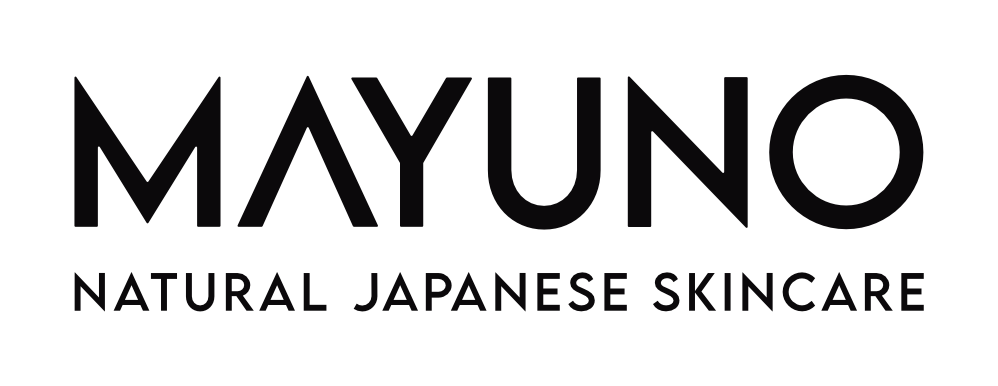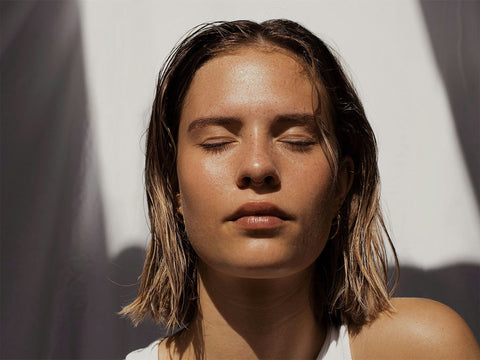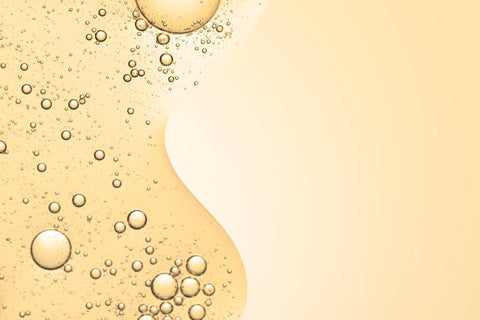Cleansing oil - the underrated J-Beauty secret
Author: Jenny Schadow, Co-Founder MAYUNO
TL;DR
Japanese cleansing oils offer a particularly gentle yet effective form of facial cleansing. They dissolve waterproof make-up, sun cream and oil-based sebum without drying out or irritating the skin. Oil cleansers are therefore particularly suitable for sensitive, dry, oily and acne-prone skin. In Double Cleansing, cleansing oils are used as the first routine step before the water-based foam cleanser.
When your skin feels tight
Our skin is exposed to various stresses on a daily basis - such as make-up, environmental influences or polluted air. If the sebaceous glands also produce more sebum than necessary, this can clog the pores and visibly enlarge them. Unwanted bacteria and fungi feel particularly at home in such an environment - which in turn can lead to blemishes and other skin problems.
Nevertheless, many are familiar with the feeling that their skin feels dry after basic cleansing, especially after removing make-up, and that it may feel a little tight or even show temporary redness. Yet cleansing is an essential step in any skincare routine.
Depending on the season, skin type and cleansing step, this skin feeling is not unusual. In most cases, the cause is a temporary lack of moisture. This is precisely where Japanese natural skincare comes in: It places particular emphasis on intensively moisturising the skin in every step of the routine, even during cleansing.
Cleansing. It can also be gentle.
In the minimalist Japanese skincare routine, facial cleansing starts with a cleansing oil. This is also the first step of Double Cleansing, i.e. two-step facial cleansing with an oil-based and a water-based cleanser.
Cleansing your face with oil? Sounds strange at first. But on closer inspection, it makes perfect sense:
Cleansing oils work according to a simple principle: oil dissolves oil. Vegetable oils have the ability to bind with excess sebum and other fat-soluble residues on the skin. This allows them to draw the impurities out of the pores. However, these are not classic cooking oils - facial cleansing oils contain special emulsifiers that transform the oil into a milky mixture (emulsion) on contact with water. This allows the oil to combine with the lukewarm water and can therefore be easily rinsed off without scrubbing. If an oil cleanser is soap-free, it protects the skin's natural fatty layer (lipid layer) and helps to keep the pH value in balance.
Japanese cleansing oils cleanse with plant oils that are close to the composition of our skin’s natural oils, such as rice bran oil, jojoba oil or sunflower oil. In addition, soothing and moisturising active ingredients nourish the skin during cleansing.
The technique makes all the difference
The application is simple but crucial: The cleansing oil is applied to a dry face with clean, dry hands. The oil is gently massaged into the face in circular movements, dissolving make-up and dirt. Then add a little water, which combines with the cleanser to form a milky emulsion. After a short massage, rinse everything off thoroughly with lukewarm water.
When is an oil cleanser alone sufficient?
- For very dry or sensitive skin: These skin types benefit from a mild cleanser that does not irritate the skin and is gentle on the natural lipid film.
- For morning routines or skin without make-up: If the skin is only slightly soiled (e.g. by sebum, skincare residue or sweat from sleep), an oil cleanser may be sufficient.
- In both cases, the oil cleanser must contain emulsifiers to wash away the oil residue cleanly.
When a second cleaning step with a water-based cleaner is required:
- As a rule of thumb, it can be said that double cleansing is almost always advisable.
- A noticeably oily film can still be felt after application.
- For make-up or sun cream: Oil cleansers dissolve grease, but unfortunately they are not strong at dissolving water-soluble residues such as fine dust or water-based make-up. Here too, a second cleaning step with a gentle water-based foam cleaner is required.
Is it right for me?
Cleansing oils are real all-rounders - because they adapt to the needs of different skin types and cleanse particularly gently without unbalancing the skin:
- Dry skin: Benefits in particular, as cleansing oils not only cleanse the skin, but also moisturise it with nourishing fats (lipids), thus counteracting dryness.
- Sensitive skin: With fragrance-free, mildly formulated oils, this method is ideal as it does not irritate the skin and preserves the natural protective barrier.
- Oily skin: Cleansing oil is also suitable here - provided that light, non-pore-clogging (non-comedogenic) oils are used. They dissolve excess sebum and help to balance the skin without promoting new impurities.
- Combination skin: Cleansing oils balance out dry and oily areas at the same time and are therefore a good choice for combination skin.
- Normal skin: Generally tolerates cleansing with oil without any problems and benefits from the gentle, moisturising effect.
Cleansing oils are considered a particularly gentle yet effective method of facial cleansing - and this has also been scientifically confirmed. A study from 2023 showed that oil-based residues can be removed much more thoroughly with cleansing oil than with cleansing water. In addition, the natural skin barrier is better preserved when cleansing oil is used. (doi: 10.3390/ijms24043950)
A love letter to your own skin
The choice of cleanser is not irrelevant. It can determine whether the skin remains healthy and radiant or becomes unbalanced. Natural Japanese cleansing oils offer a sophisticated, mild yet effective alternative to conventional facial cleansing. They show their particular strength in double cleansing and/or make-up removal. When you choose an oil cleanser, you are not just choosing a method, you are choosing to treat your skin with care.
FAQs - All about cleansing oil
When should I use cleansing oil?
It is recommended that you use it primarily in the evening, as this is when make-up, sunscreen and residue from the day should be thoroughly removed. However, cleansing oil is generally also suitable for use in the morning, especially if a lot of sebum has been produced overnight or rich skincare products have been used.
Do I have to wash off the cleansing oil?
Yes, cleansing oil should always be rinsed off thoroughly with water. Due to the emulsifier it contains, it combines with water to form a milky oil-water mixture that gently removes make-up, dirt and excess sebum from the skin. If it is not rinsed off, residues can remain on the skin, which can hinder the penetration of subsequent skincare products or promote impurities.
Why does my skin sometimes still feel ‘coated’ after cleansing with oil?
This may be because the oil has not been fully emulsified or rinsed off. Make sure to turn the product into a milky emulsion with a little water and rinse off thoroughly with lukewarm water. At the latest a few minutes after washing, you should no longer notice any residue.
Does oil cleansing remove blackheads?
Cleansing oil removes excess sebum and dead skin cells - both of which are the main causes of blackheads. Although it does not remove existing blackheads immediately, it can help to reduce their formation in the long term and keep the pores clean.
How can you recognise good quality cleansing oils?
To recognise a good oil-based product, look for high-quality plant-based ingredients, ideally organic. You should avoid mineral oils, parabens, drying alcohols such as ethanol, alcohol denat. or SD alcohol, as well as artificial fragrances, as they unnecessarily burden the skin. Another indication of a high-quality product is the list of ingredients: The higher up the list the vegetable oils are, the higher their actual content - and only then can they really develop their nourishing effect.
Which skin types is an oil cleanser suitable for?
In principle, oil cleansers are suitable for all skin types - from dry to oily, sensitive to mature. The decisive factor is the right formulation. You can find out more in the above blog post.
Is cleansing oil also suitable for very sensitive skin or skin prone to rosacea?
In principle, yes - as long as it is a particularly mild cleansing oil without irritating additives such as alcohol or perfume. Instead of synthetic fragrances, Japanese natural cosmetics rely on natural essential oils. However, these can also trigger individual skin reactions in some skin types.
If you know that you have reacted sensitively to certain essential oils in the past, you should avoid products with these ingredients.
As rosacea triggers often vary from person to person, we always recommend a patch test to be on the safe side: apply a small amount of product to the inside of your forearm or neck, for example, and observe the skin reaction for at least 24 hours. You can also find the full list of ingredients on the respective product page.
In the case of cystic acne or very sensitive skin, it is advisable to obtain a dermatological assessment in advance. In general, cleansing oils are considered to be much gentler on the skin than many foaming cleansing products, as they place less strain on the skin barrier.
How often should I use a cleansing oil?
Basically whenever you want to remove make-up or in the evening. It is also recommended to use the oil in the morning, especially for very dry skin. Japanese cleansing oils are gentle enough to be used every day.
How do I use the cleansing oil?
You don't need cotton pads or tissues. It is more environmentally friendly and even more effective if you apply the cleansing oil directly to your face with clean, dry hands. Gently spread the oil over the entire face and massage it in carefully. With moistened hands, gently massage the oil further to a milky, somewhat thick consistency and then rinse off thoroughly with lukewarm water. After dabbing dry with a clean towel, you can move on to the next skin care step.
Do I really need to use a second cleanser after the cleansing oil?
Not necessarily. If you are not wearing heavy make-up or waterproof sun cream, the oil may be sufficient. If you have oily skin, wear make-up frequently or have blemishes, a second, water-based cleanser can be very useful.







